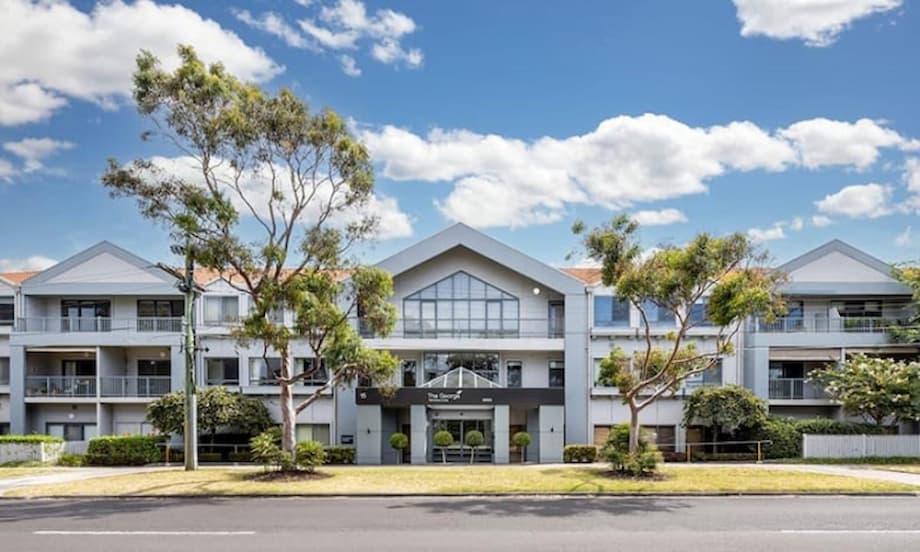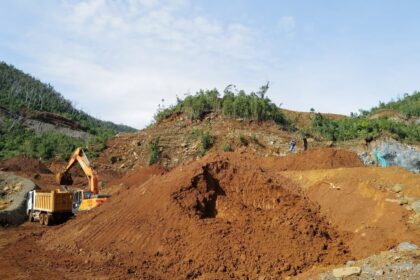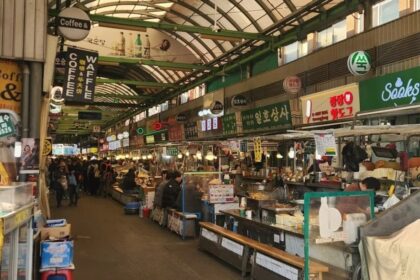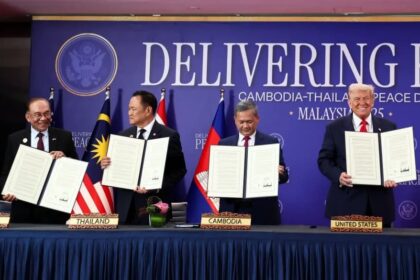South Korea’s Rental Housing Revolution: Why Global Investors Are Betting Big
South Korea’s rental housing market is undergoing a seismic transformation, drawing some of the world’s largest property investors. At the heart of this shift is a dramatic rise in single-person households, changing lifestyles, and a government eager to attract institutional capital to address housing shortages and modernize the sector. As global giants like Greystar, The Living Company, and Canada’s CPPIB pour billions into Korean rental housing, the country’s real estate landscape is being reshaped in ways that could have lasting implications for residents, investors, and policymakers alike.
- South Korea’s Rental Housing Revolution: Why Global Investors Are Betting Big
- What’s Driving the Surge? The Single Household Boom and Changing Demographics
- Global Capital Moves In: Who’s Investing and Why?
- How the Market Is Changing: From Build-to-Sell to Build-to-Rent
- Regulatory Hurdles and Policy Debates: Can Growth Be Sustained?
- Broader Market Trends: Supply Shortages, Price Gaps, and Economic Headwinds
- In Summary
What’s Driving the Surge? The Single Household Boom and Changing Demographics
South Korea’s population is aging and urbanizing, but perhaps the most striking trend is the explosive growth of single-person households. According to government and industry data, single-person households accounted for 41.5% of all households nationwide by the end of 2024—up from just 29.5% in 2015. In Seoul, the share is even higher, with nearly four out of ten households now consisting of just one person. This demographic shift is not only changing social norms but also fueling demand for new types of housing—smaller, more flexible, and professionally managed rental units.
Young professionals, students, and even seniors are increasingly seeking compact apartments in prime city locations, often with amenities like shared kitchens, gyms, and co-working spaces. The rise of these single and two-person households has made Korea’s rental market a magnet for global real estate capital, especially as traditional homeownership becomes less attainable for many.
From Jeonse to Monthly Rent: The Decline of a Unique Korean System
Historically, Korea’s rental market was dominated by the jeonse system—a unique arrangement where tenants pay a large lump-sum deposit (often 50-80% of a property’s value) instead of monthly rent. At the end of the lease, the deposit is returned. While jeonse was once seen as mutually beneficial, it has become less attractive amid rising property prices, stagnant wages, and recent high-profile rental scams that left some landlords unable to return deposits.
As a result, monthly rental agreements are rapidly replacing jeonse, especially among younger and foreign residents who may not have access to large sums of cash or bank loans. This shift has opened the door for institutional investors and professional operators to enter the market with new rental models, including co-living spaces and serviced apartments.
Global Capital Moves In: Who’s Investing and Why?
Foreign institutional investors have been circling Korea’s rental housing sector for several years, but recent policy changes and market trends have accelerated their entry. Major players include:
- The Living Company (Australia): Opened its Korea office in 2025, making the country its first overseas hub and signaling a long-term commitment to the market.
- Greystar Real Estate Partners (US): The world’s largest rental housing investor, launched Korean operations in July 2025 and plans to integrate Korea into its $2.6 billion Asia-Pacific fund.
- Canada Pension Plan Investment Board (CPPIB): Formed a 500 billion won ($344 million) joint venture with Korean developer MGRV to build rental homes, marking its first direct investment in Korean residential real estate.
- Morgan Stanley: Partnered with local developer SK D&D to invest in residential properties, following similar moves by KKR, ICG, Hines, and others.
These investors are betting that Korea’s rental market will follow the path of the US and Europe, where professionally managed, build-to-rent (BTR) housing has become a major asset class. Their strategies often start with student housing and compact city apartments for young adults, with plans to expand into senior living as the population ages.
Why Korea? Market Fundamentals and Policy Shifts
Several factors make Korea especially attractive to global investors:
- Strong Demand: The rapid growth of single-person households and a persistent housing shortage, especially in Seoul, create robust demand for rental units.
- Regulatory Reforms: In August 2024, the government announced a sweeping Rental Housing Supply Plan, easing regulations on institutional investment and offering tax incentives for long-term rental housing. The plan aims to supply over 1 million multifamily homes for long-term lease by 2035.
- Comparative Affordability: Despite recent price surges, Seoul’s monthly rents remain lower than those in Tokyo, Hong Kong, or New York, offering room for growth and attractive yields for investors.
How the Market Is Changing: From Build-to-Sell to Build-to-Rent
Traditionally, Korean developers built apartments to sell to individual buyers, relying on project finance and exiting quickly. The new wave of investment is shifting the focus to build-to-rent (BTR) models, where operators retain ownership and generate long-term income from tenants. This approach requires deep pools of capital, operational expertise, and a willingness to navigate Korea’s complex regulatory environment.
Professional operators are introducing global best practices in property management, tenant services, and community-building. For example, co-living spaces—where residents have private bedrooms but share kitchens, lounges, and workspaces—are gaining popularity among young professionals and students. These models offer flexibility, convenience, and a sense of community, addressing the needs of a mobile, urban population.
The Rise of Co-Living: A New Residential Alternative
Co-living is emerging as a mainstream residential trend in Korea’s major cities. According to research from JLL and other industry sources, co-living assets target young singles, students, and international residents who value communal living and flexible lease terms. Units are typically compact (median size around 23 square meters in Seoul) but come with shared amenities like gyms, coworking spaces, and libraries.
Rents for co-living units are higher than traditional officetels (studio apartments), reflecting the added value of services and community. In Seoul, the median monthly rent for a co-living unit under 40 square meters is about 1.13 million won, with premium locations like Gangnam commanding up to 1.7 million won. The sector is attracting both domestic and foreign investors, with notable deals including the conversion of unsold officetels and hotels into co-living spaces.
Institutional investment is also being channeled through real estate investment trusts (REITs), with IGIS Residence REITs leading the way and others planning new co-living portfolios. The government’s support for REITs and long-term rental housing is expected to further boost the sector.
Regulatory Hurdles and Policy Debates: Can Growth Be Sustained?
Despite the optimism, Korea’s rental housing market faces significant regulatory and social challenges. The country’s tenancy laws, especially the jeonse protection law, cap rent increases at 5% for contract renewals every two years. While these rules protect tenants, they limit flexibility for operators and may deter some investors.
Recent policy changes have relaxed some restrictions, especially for long-term private rental housing. The government’s 2024 Rental Housing Supply Plan categorizes business models into supported, semi-autonomous, and autonomous housing, each with different levels of regulation and tax incentives. Owners of private rental housing can benefit from exemptions on acquisition and property taxes, provided they commit to 20-year leases and comply with rent escalation standards.
However, implementation requires legislative amendments, and the political climate remains uncertain. Proposed measures to further regulate foreign ownership—including permit systems, higher taxes for multi-property holders, and stricter oversight—have sparked debate about market access, reciprocity, and the risk of deterring legitimate investment.
Foreign Ownership: Opportunity or Threat?
Foreign nationals now own more than 100,000 housing units in Korea, with three-quarters located in the greater Seoul area. While this represents only about 0.5% of the country’s housing stock, the trend has raised concerns about affordability, market distortion, and regulatory loopholes. Chinese, American, and Canadian buyers are the most active, with some using offshore financing to bypass local loan restrictions.
Most foreign owners hold just one property, but a small number own multiple units, fueling speculation about investment-driven purchases. Policymakers are considering new rules to track and regulate foreign transactions, but legal and constitutional challenges remain. Some experts argue that the impact of foreign ownership is overstated, given the relatively small share of the market, while others warn that unchecked demand could exacerbate housing shortages and price pressures.
Broader Market Trends: Supply Shortages, Price Gaps, and Economic Headwinds
Korea’s housing market is highly polarized, with price and rental growth concentrated in Seoul and its suburbs while regional markets lag behind. Newly built apartment prices in Seoul are more than double the national average, and the gap between large and small cities is the widest among OECD countries. Despite government plans to build millions of new units, construction permits and starts have stagnated, and the Korea Development Institute estimates a cumulative shortfall of nearly 900,000 units since 2017.
Rental inflation has stabilized, but supply still falls short of demand, especially for high-quality, professionally managed units. The shift from jeonse to monthly rent is attracting more institutional and foreign capital, but also raising questions about affordability and access for local residents. Mortgage rates remain elevated, and the economy faces headwinds from global trade tensions and domestic political uncertainty.
Korean Investors Look Abroad
Interestingly, as foreign capital flows into Korea’s rental market, Korean institutional and individual investors are increasingly looking overseas—especially to the US, Japan, and other developed markets. Soaring home prices and regulatory uncertainty at home have made overseas real estate an attractive alternative, with Korean investors seeking stable returns and diversification. This two-way flow of capital underscores the global nature of real estate investment and the interconnectedness of housing markets.
In Summary
- South Korea’s rental housing market is attracting record levels of global investment, driven by demographic shifts and policy reforms.
- Single-person households now make up over 41% of all households, fueling demand for compact, professionally managed rental units.
- Foreign investors like Greystar, The Living Company, and CPPIB are leading the charge, introducing build-to-rent and co-living models.
- The decline of the jeonse system and rise of monthly rentals are transforming the market and creating new opportunities for institutional capital.
- Government policies are easing regulations and offering tax incentives, but strict tenancy laws and debates over foreign ownership remain challenges.
- Co-living is emerging as a major trend, with high rents and strong investor interest in Seoul and other major cities.
- While foreign ownership is still a small share of the market, concerns about affordability and market distortion persist.
- Supply shortages, price gaps, and economic headwinds continue to shape the outlook for Korea’s housing market.
- Korean investors are also increasingly looking abroad, highlighting the global dynamics of real estate investment.












